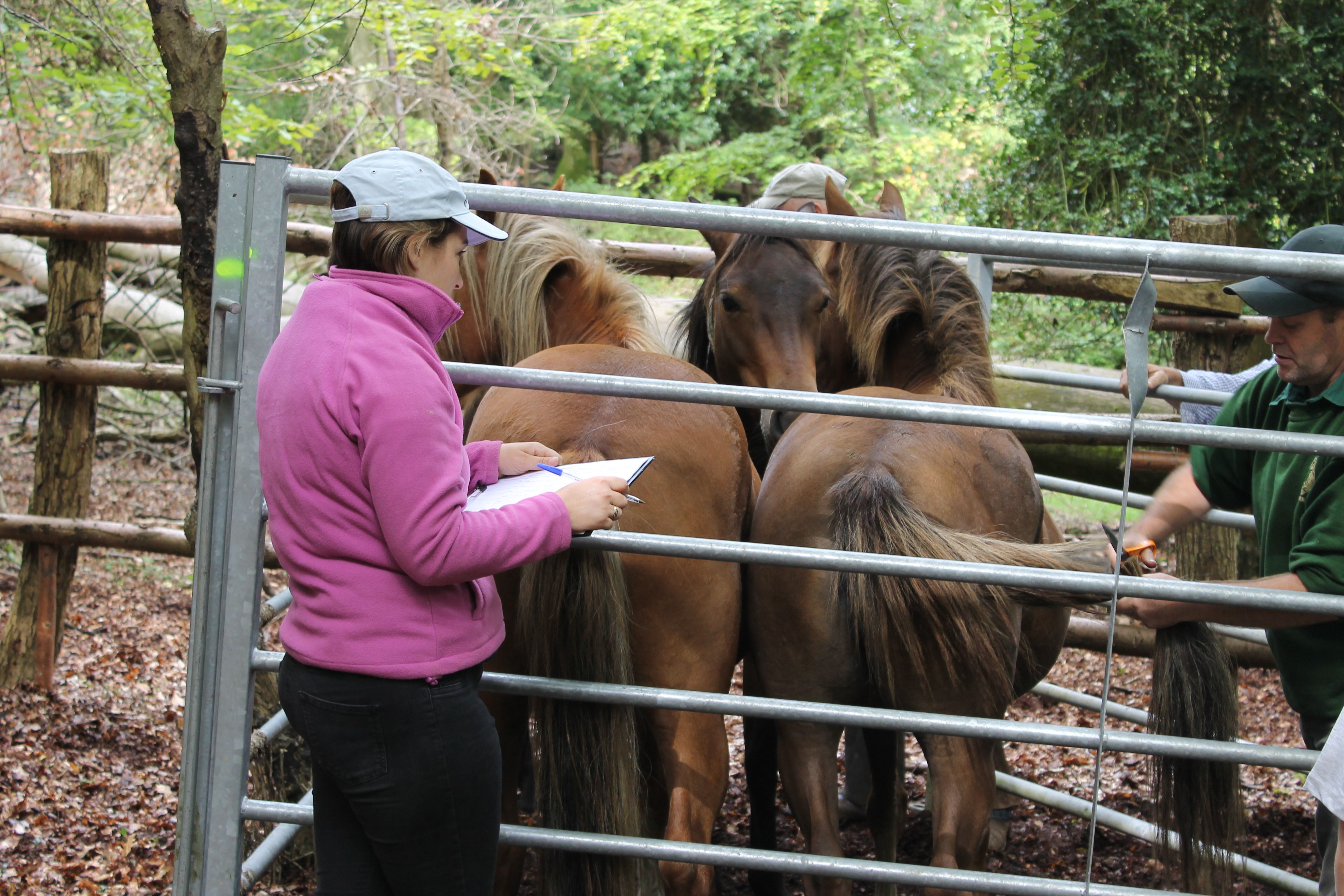
The Agisters control the drifts and direct the commoners who assist with the round-ups.
A sure sign of autumn in the commoner’s calendar is the commencement of the pony drifts that take place each year. The drifts are round-ups that are conducted by the Agisters and commoners with the aim of collecting together as many of the free-roaming ponies as possible for checking, processing or dispersal. Over 40 drifts will take place in various locations, between August and November every year, but combined will cover all areas of the New Forest. For administration purposes, the Forest is divided roughly into four districts with an Agister responsible for each one. The Agister from each district is able to rely on the assistance of his colleagues, including the head Agister, in the running of the drifts. The word ‘Agister’ is derived from the old Norman French and basically means to care for and feed animals, such as deer, cattle and horses, for a fee. Agisters patrol their districts daily, often on horseback, and have an intimate knowledge of the terrain. The daily contact they have with many of the animals and commoners in their territory becomes invaluable during the operation of the drift. The Agister will reconnoiter the area to be drifted, usually on the day before, to get an idea of which herds or bands of ponies are where. From this assessment the Agister knows how to conduct the drift and what directions he needs to give to those supporting him. Of course, even with all that prior preparation, come the morning it all changes.
Drifting on the New Forest has an ancient lineage and originated during the medieval period as a method of hunting deer. Herds of red and fallow deer would be driven or ‘drifted’ by riders into nets or towards waiting bowmen who would shoot them as soon as they came into range. Nowadays the drifts are used to round up the ponies into the pounds, which look like large corrals, where they can be given wormers or fitted with florescent collars and tail-marked by an Agister if they are staying on the Forest for the winter; or they can be loaded onto trailers and removed to the commoner’s holding if they are to be kept in for the winter or sold on. Many of the commoners, who own the free-roaming ponies, attend and assist with the drifts, some by riding with the Agisters and others on foot. Helping on a drift where ones ponies are depastured is always filled with feelings of excited anticipation. There is always a hope that one’s ponies will come in to be processed. However, many commoners work in full-time occupations that do not give them the flexibility to attend the weekday drifts, so the support of the rest of the commoning community is vital. Commoners will help on drifts outside of their areas or districts to assist their brethren. It is an import activity on the New Forest and one that depends on cooperation, coordination and communitywide support. Once the work is done and the ponies are in the pound, it is also an opportunity for meeting old friends, making new ones and absorbing the atmosphere of an important New Forest tradition.

The Agister cuts the pony’s tail to show the owner has paid their marking fee.
IMPORTANT NOTE: The Verderers of the New Forest have announced that the ‘drifts’, or pony round-ups, are an essential part of the management of the semi-feral herd to maintain the health and welfare of the ponies. The dates of the #NewForest drifts are advertised to alert visitors and road-users to beware – NOT as an invitation to attend. For their own safety, members of the public are urged to avoid the area of the drift on the planned dates. #workingforest


You must be logged in to post a comment.